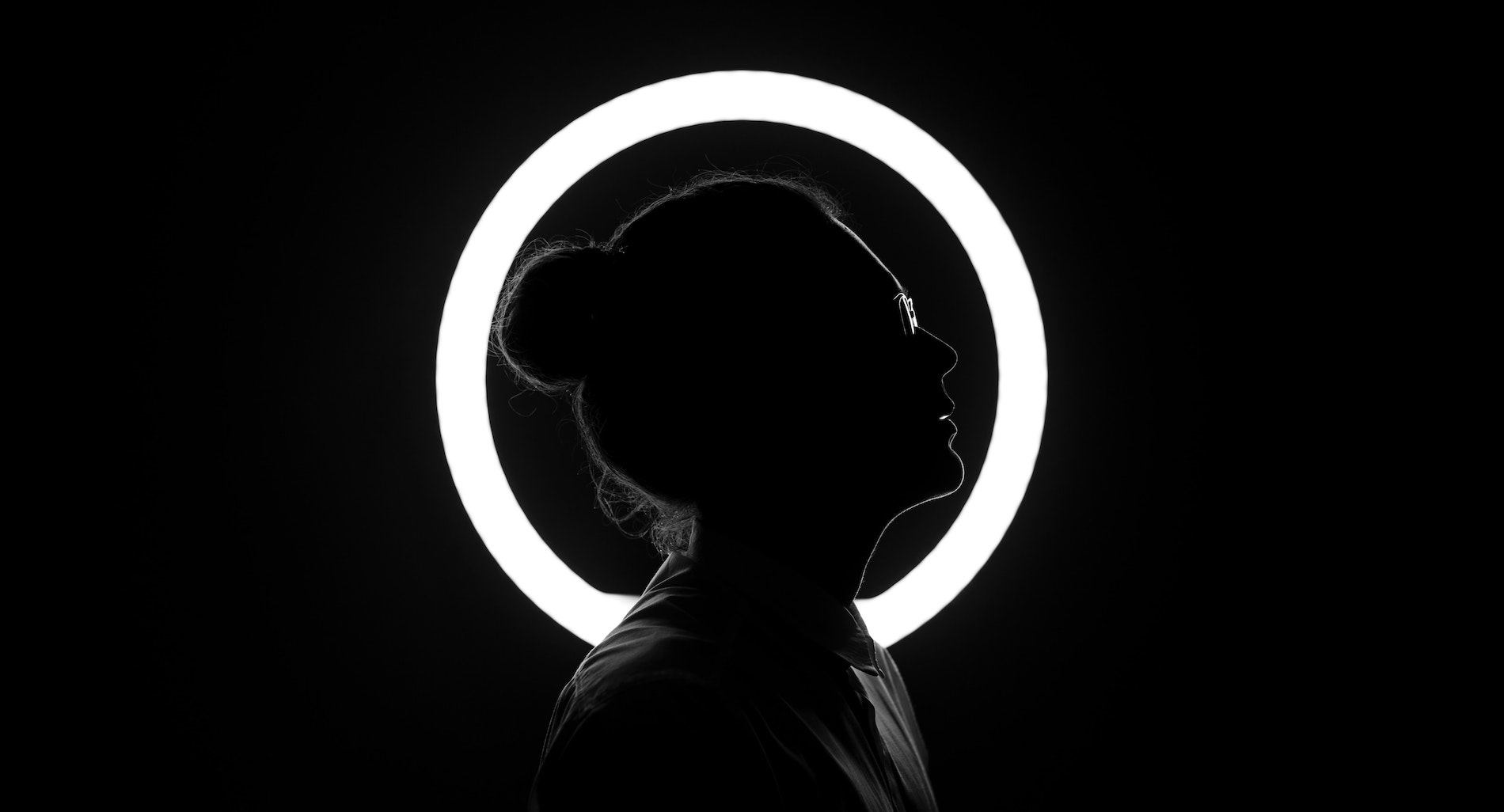In this article, Partner at Khora Matias K. Siedler and Henrik Lübker, Director at Design denmark, will shed light on how the digital world impacts our analog lives, but also how our physical experiences are blending in and forming new digital ones, observing in detail how this constitutes an opportunity that museums should take in close collaboration with its users.
The technological advances of our time and the rapidly accelerating development of artificial intelligence should have the undivided attention of the museum world. The potential is enormous, and “the future is already here,” writes Design denmark’s director Henrik Lübker and partner in the Danish virtual reality company Khora, Matias K. Seidler.
In collaboration with researchers and archaeologists from the National Museum of Denmark, Khora has brought the Egtved Girl to life as a talking, hyperrealistic digital avatar.
The example shows how new technology can create new living encounters with our cultural heritage in physical and online spaces.
The Egtved Girl was created using MetaHuman, a piece of software that makes it easier and faster to develop human-like characters using 3D. Before MetaHuman, it took 10 times as many resources to produce lifelike humans in 3D. Today, even small companies – with the right expertise – can work with cultural institutions to bring historically significant figures to life. This requires close collaboration between tech companies, cultural communicators, and researchers.
However, MetaHuman is just the tip of the technological iceberg. In 2022, we saw many wildly accelerating trends, all of which hold enormous potential for using new technology to create transformative and meaningful changes to the way we think, design and produce culture.
We saw artificial intelligence conversing, cutting movies, painting pictures, programming games, and writing articles at astonishingly high levels and with little human input. Does that seem scary? Maybe for some. We’ve seen agencies and consultancies screaming ‘disruption’ for years. And since historically, there’s no evidence of technologically induced mass unemployment, but greater mobility and liberation of people from repetitive, automatable work into creative work and thinking; we believe that change and potential will not decenter humans from the creative processes but rather become a driver for more inclusive and human cultural institutions.
Dissolving Boundaries
Looking ten years into the future, we see the first examples of what we call cultural ‘hyperinstitutions’. A hyperinstitution is a term used to describe organizations that exist primarily or exclusively in a digital format. They are hybrid and characterized by being collections of network structures and relationships. These organizations may have a physical presence, but their primary activities and interactions occur online – or somewhere between the physical and online.
This means that they no longer have the spatial, organizational and content boundaries that have characterized institutions in the past. New technologies and algorithms such as OpenAIs, XR and the metaverse are dissolving the digital and the physical divide.
Another huge win is that an aestheticized design process makes collaboration and co-creation with content providers cheaper and more agile.
The population has stopped distinguishing between the digital as a mediation of the physical and is weaving effortlessly in and out of immersive and hybrid formats. At the same time, they expect their interests and engagements to be reflected in the institution’s mediation offer. For the hyperinstitution, it is natural to exist in many spaces at once, between past and present – as in the example of the Egtved Girl – but also between people and technology, between cultural producers and cultural users, and between research and dissemination.
The hyper-institution transcends and complements the classic spaces of mediation. It appears and has a presence in the areas between, outside, or in between buildings, may those be in urban or online spaces. The new institution dissolves boundaries, breaks down walls and creates new contexts and relationships. It disseminates virtual, hybrid and physical experiences carried and nurtured by a diverse community. A new type of user who, whether paying a virtual, physical or product-based visit, understands themselves as visitor producers, as creators.
Museums as ‘hyperinstitutions’
Technological developments will expose and incorporate a human truth that has always been there, but which our cultural institutions will only now – with new technology – be able to fully unfold in their dissemination products. The fact that users are never passive recipients but always active creators.
As the philosopher Jacques Ranciére has pointed out in his book ‘The Emancipated Spectator’, among others, the recipients are always creators because they observe, compare, select and interpret what they encounter by comparing it with their interior and their own past. They are constantly creating new poems based on all the other poems they experience around them. Against this background, we find it meaningful to use the museum as a case and imagine the world in 10 years.
“Technological developments will expose and incorporate a human truth that has always been there, but which our cultural institutions will only now – with new technology – be able to fully unfold in their dissemination products. The fact that users are never passive recipients but always active creators.”
Technology as a co-creator
In 2033, the majority of museum collections and knowledge will not be in the dark, hidden behind institutional walls. With the help of artificial intelligence, such as further developments of OpenAI’s Chat-GPT, human-like interfaces will provide open access to the vast amounts of data, objects and knowledge from our cultural heritage.
Before, institutional filters and curatorial preferences created categorizations and biases that shaped access to data. Now, institutional knowledge and data have been opened up wide and have become co-creation processes, where the user, together with the technology, thinks with data rather than about data. This is happening because it is becoming much easier to explore connections across data sets, something humans excel at, while at the same time, technology is providing surprising links and perspectives.
In this way, the archive and collection is not so much a container full of information for the user to find but the potential for a creative exploration of how the data held in collections and archives can be assembled into new meanings for the individual. The focus shifts from information to knowledge production, from static data to context-sensitive relationships, and from institutional ownership to shared ownership with users, where users put knowledge actively into play in their lives.
From classical cultural institutions to research and dissemination laboratories
What was the driving force behind the transformation of institutions into hyperinstitutions? Shared ownership!
Indeed, new AI technologies make large parts of the design and development processes faster, more sensory and inclusive. Research into user behavior, interests and trends as well as experimental deep dives into archives and collections and mapping of the patterns and desires of the existing user base, become rapidly accessible processes for laymen and experts alike. It is thus anchored across the organization’s various disciplines, just as users are involved in the actual development work.
In other words, the entry level to be a part of development processes is lowered, and the door is widened. With text and visualization technologies such as Chat-GPT, Midjourney and DALL-E 2, anyone can experiment and turn the classic post-it notes of the design process into articles, and descriptions into images at lightning speed.
We will see users’ consumption of communication products transformed into direct participation in future initiatives’ direction, style and content.
Visual and narrative mock-ups and mood boards can be created in real-time. This opens up an aestheticization of the design process much closer to a final expression in form and format. The feedback loop between intention and expression is accelerated. These are reasons why AI-assisted design and development enables more significant alignment between stakeholders. It allows the cultural producer and core audience to co-create in an aestheticized, sensory space. Ultimately, the hyperinstitution will appear as an open and transparent research and dissemination laboratory rather than a classical walled-in, closed-off institution.
Therefore, the hyperinstitution’s developmental processes open up. This is how they can be thought of as dissemination products specifically because they are sensitive toward how cultural heritage becomes meaningful for the individual. The presentation and confrontation with culture is no longer the byproduct of a museological development process, but something that happens continuously in the process of interacting with end users itself. Experimental new research and dissemination become two sides of the same coin.
Living meetings – adapted to the individual
The future of communication is dynamic. It follows users across platforms and curates content for the individual. ‘Morning News’ is the institution’s curated look at the world, ‘Podcasts’ with experts and researchers going in-depth on the topics that most captivate listeners – ‘Backstage’, where researchers and curators put small bits of knowledge out to interested parties, and much, much more. Together, they form a network of dissemination in different subject areas, targeted at the needs and wishes of users. At the same time, a wide range of partnerships with cultural and commercial actors will create new mediation spaces and contact interfaces with new target groups.
And then there are the three main attractions:
- The Dissemination Laboratory, where draft exhibitions are displayed and debated and visitors can use their membership tokens to vote on which part of our shared cultural heritage to produce.
- The exhibition, a mix of living installations, exhibition mediation, and immersive sensory experiences, makes connections across time and space, being and beingness. Where atmosphere and mood change from visit to visit, responding to the visitor according to the profile the institution has created on the visitor and through the visitor’s interaction with the exhibition.
- Digital reality filters allow the visitor to explore site-specific transformations of landscape and city through their smart device.
Museum Club 2.0
All of these new and renewed dissemination platforms not only extend the institution’s reach but also form new dissemination spaces that are neither uniquely digital nor analog.
They are the spaces created by each user’s movement through the use of the hyperinstitution’s various dissemination products. In this way, the user becomes his or her self-made curator through interaction with the various mediation products made available by the hyperinstitution. Such a ‘third space’ creates opportunities to develop targeted member services that support users’ active engagement with history.
In the hyperinstitution, the museum will provide different member services that activate particular narratives or digital layers in line with the user’s interests. We will see users’ consumption of dissemination products transformed into direct co-influence on future initiatives’ direction, style and content. Their participation will be gamified – for example, in the form of digitized storytelling that guests can collect and activate at home, and much more.
The future is here
Does the hyperinstitution sound like a dream, a nightmare, or something too far-fetched?
We are convinced that the cultural institution of the future will have to fight to make itself visible in a market overflowing with content. Technology will only accelerate this. But at the same time, technology creates new opportunities for relevance and powerful sensory encounters with our shared past. The winners will be those who can creatively translate the many possibilities and integrate them into how institutions create meetings with their users.
So, here’s the call:
Give it a go. Put the coffee on, open the Chat-GPT, and ask away. Draw up the outlines of a GPT3-assisted working day and ask yourselves: What can GPT-3 and DALL-E 2 contribute to exhibition design, concept development and new forms of dissemination with co-creation at its core? The future is already here. Make use of it!
Follow Design denmark’s work on LinkedIn, Instagram, or visit their website. For Khora, join them on LinkedIn, follow them on Instagram, or visit their website.
Cover image courtesy of Fabio Lucas.
A version of this article appeared on Museum Next on Jan 2023.




